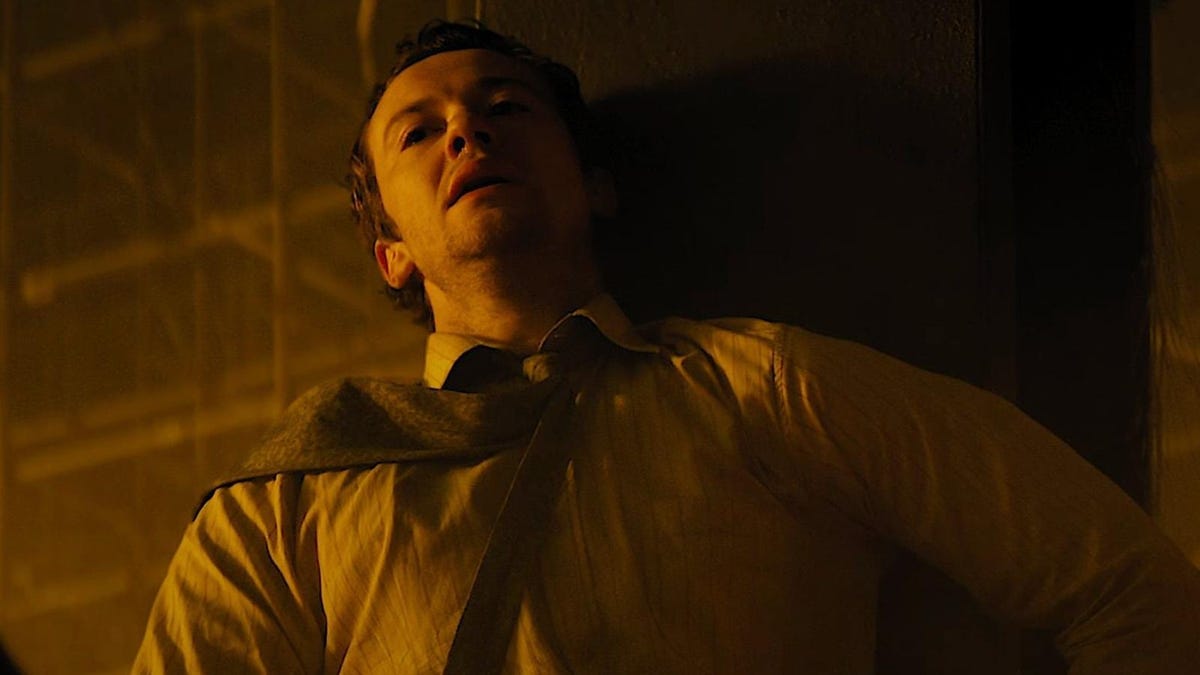Warhammer 40K 10th Edition Hands-On Demo: Simpler, But Better

The next edition of Warhammer 40,000—the 10th in Games Workshop’s venerable tabletop miniatures game—is set to hit shelves this summer, bringing with it a sea of rule changes that will make the intimidatingly dense game feel quicker and cleaner to play. From what little we could tell braving the tables of Warhammer Fest 2023 to try it for the first time, it seems like the company might be on to something.
Following the reveal of the massive launch box Leviathan this past weekend, Games Workshop opened the tables inside Manchester’s central convention complex to hundreds and hundreds (and hundreds—wait times to play the new edition regularly topped the three hour mark) of wargamers to get a brief taste of how the new rule systems will work for 40K at large starting in June 2023.
The hands-on demo was a limited slice of what it already shaping up to be a less bloated version of the current game, intimidatingly weighed down by layers of ancillary rules spread across multiple sourcebooks and other complexities. Players were limited to only a single battle round of play, with only a fraction of the new Space Marine and Tyranid forces that will be available in Leviathan—two new Screamer-Killers and two 12-unit squads of Termagant infantry for the alien Tyranids, and two Ballistus Dreadnoughts alongside four five-man squads of flamethrower-wielding Infernus marines. The ability to issue stratagems through command points, a dense layer being streamlined in the new edition, was restricted to only allow them to be spent on re-rolling saves. And with just a single objective in the center of the table to fight for control over, all you could really do was be less of a master tactician and more of just… a gleeful child firing your guns and then promptly smashing into each other all at once, basically.
But guess what: being a gleeful child firing your guns and then promptly smashing into your enemies’ battle lines all at once is very fun, and the 10th edition seems laser-focused on trying to make that fun as smooth and speedy as possible. The battle round I played in—which ended in a close draw thanks to one batch of Infernus marines holding off a Termagant charge after whittling them down with the dreadnaught’s rockets and a volley of pyreblaster fire, while the other valiantly shrugged off a horrifying charge by a Screamer-Killer long enough to keep it and its amped-up objective control stats away from the center of the board—was over in just under 30 minutes. That was partially due to our overseeing Games Workshop staff member encouraging us to get stuck in and roll dice with haste, but it was also because so far 40K’s 10th edition really is committing to making the game still feel deep, but without a lot of the extra layers of impeding frustration that can make Warhammer feel less like it’s about rolling dice and making plays, and more about flipping through rulebooks to see if you can jam another wrench into the works of combat.

As someone who has not regularly played the sci-fi side of Warhammer for the best part of a couple of decades (I was a third edition baby, and my recent return to the hobby has largely focused on Games Workshop’s fantasy game, Age of Sigmar), seeing the changes to onboard me into 40K in hand made it feel far less intimidating than I had previously felt trying to get into the current iteration of the game. The biggest barrier cleared by the new edition is the introduction of datasheet cards—which already exist in a similar capacity in Age of Sigmar—that aim to put every necessary rule for a unit at hand for a player to see, instead of them having to turn to rulebooks. Although experience with an army eventually overcomes this hurdle, it’s a vital asset for bringing in newcomers or returning players who have not seen Warhammer at its most complex, and letting them get going smoothly and quickly.
Also welcome are the modifications Games Workshop has made to the phases of a turn, condensing and tweaking the old structure to more sensibly order the flow of gameplay. Psychic powers, which previously had a dedicated phase of play before other combat began, are now used in standard ranged and melee combat instead, while many stratagems (buffs issued to units by spending command points accrued through controlling objectives as the game progresses) that were previously issued at the start of rounds are now baked into individual units as abilities to deploy elsewhere. Although restricted in testing here—no units on the board had psychic powers to utilize, and as previously mentioned, stratagem’s beyond re-rolls were off the table—everything did feel both quicker and smoother to play while not feeling like you’d be robbed of decision-making or things to do with your time in a turn.

This is also reflected in part by changes to units in general in 10th edition: everything feels a tougher, and not in a bad way. By and large, most units in 40K now feel sturdier, and with less armor penetration abilities at play (bonuses to attacks that make it tougher for an opponent to roll a successful save against your attack), it means things are more likely to stick around a bit longer. This is amplified by the tweaked final part of a battle round, the battleshock phase. Previously, units that had been reduced to less than half of their strength in that turn had to take a morale test, and if they failed it, they could find themselves cut down even further as models in the unit were removed to account for routing soldiers. Now, failed battleshock tests result not in your weakened unit losing even more models, but in them losing their ability to contest objective territory in the next turn, or be influenced by command orders.
On the surface this might sound bad, like your units coming into the new edition will feel weak. But in practice, they don’t. While with a few dice rolls on your side, a good charge or round of shooting can still feel devastating, even the lowliest infantry unit is less likely to just be completely wiped off the board in a single attack. This draws combat into being less about kill counts and more about the strategy of holding and contesting the field of battle effectively. It still makes for great stories that enchant newcomers—on one side of our board, an enemy Screamer-Killer slaughtered an entire squad of Inferus Marines in a single attack, putting the Space Marines on the back foot, while on the other, a similar situation resulted in a down-but-not-out squad of troopers holding off the second Screamer-Killer in close combat, even knocking off a few wounds with their pistols for good measure. But it ultimately results in a game that is less likely to brush you off when an unfortunate twist could completely knock a unit out of play before they could do anything.

Even though my time with the new edition of 40K was short—and restricted enough to not feel like I have quite a grasp on all of its intricacies and changes yet—it left me more optimistic than ever about getting stuck into the grim darkness of the far future again. Easier entry points, not just in new rule changes, but in new formats to play Warhammer (I’m very excited about Combat Patrol, a smaller-scaled match type built around GW’s Combat Patrol army boxes), effectively erase some of my own personal hang-ups about approaching the game I adored as a kid. With a more level playing field for access to the new rules—the core rules will be free when 10th edition releases, and every faction in the game will have new rules and datasheets from day one without needing to wait for new rulebooks for months or years into the life-cycle of the edition—the ability to either pick up an old favorite like my beloved Eldar, or try a new faction out like the Tyranids or Tau, feels much less intimidating or as big an investment.
In its new era, Warhammer 40K still by and large feels like itself—strategic and compellingly mechanical—without feeling overwhelming in ways that make me feel hopeful that the game, on the verge of more mainstream awareness and popularity than ever before in its 40-year history, is about to become more open for all sorts of people. And in Games Workshop’s messy, epic story of perpetual war and strife, it’s always good to have more hands that can hold a chainsword or two by your side.
Want more io9 news? Check out when to expect the latest Marvel, Star Wars, and Star Trek releases, what’s next for the DC Universe on film and TV, and everything you need to know about the future of Doctor Who.
Source link





